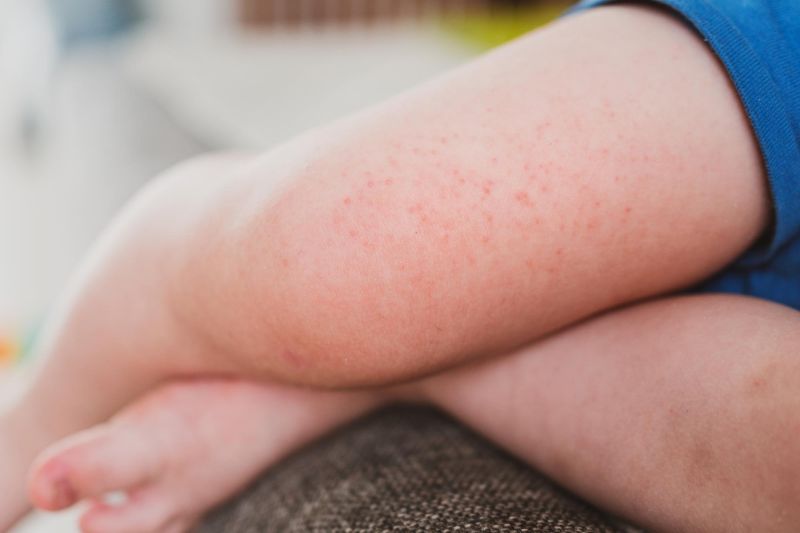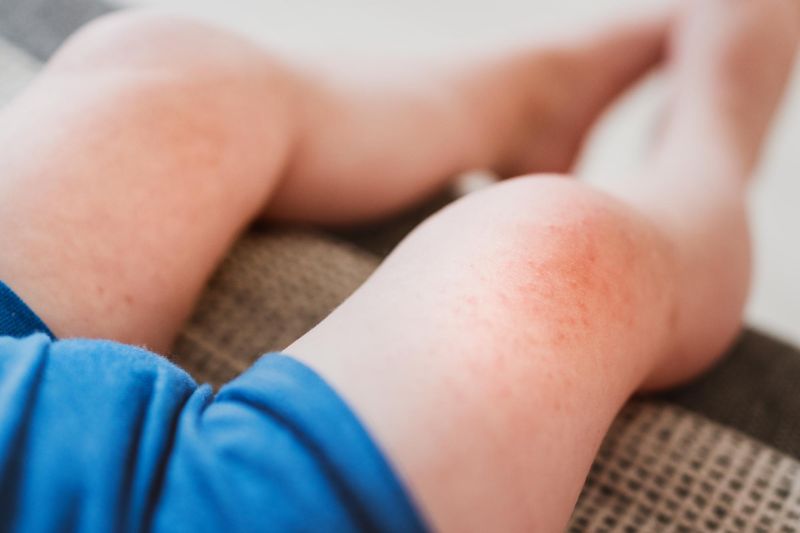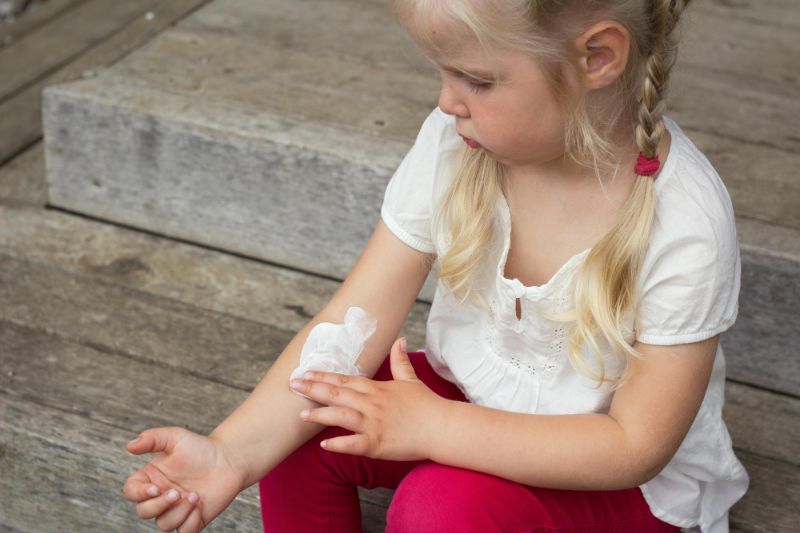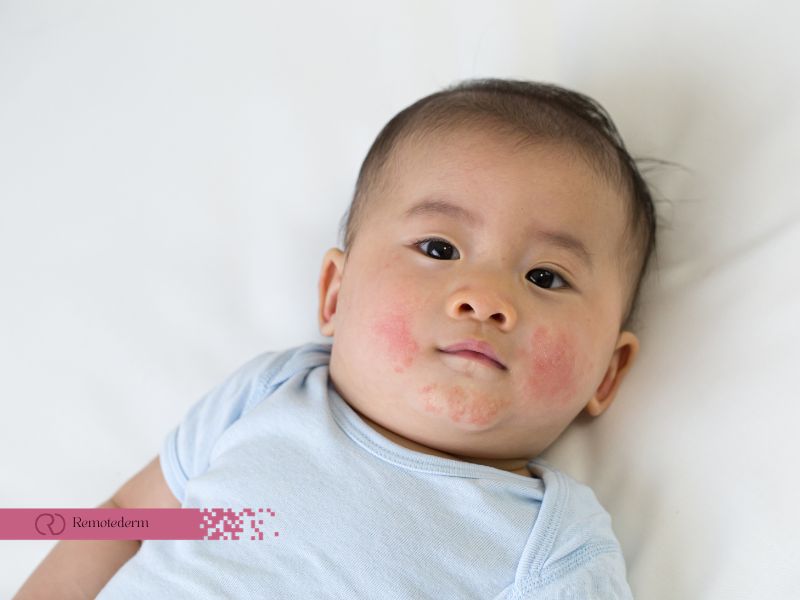Eczema in children is a common skin condition that impacts individuals of all ages, including infants and toddlers. It can be a source of discomfort and concern for both parents and their little ones. In this comprehensive guide, we will delve into the world of eczema in children, exploring its causes, symptoms, and effective treatments. We will also discuss what eczema looks like on a child, common triggers, and the role of an eczema dermatologist in managing this condition.
Causes of Eczema in Children
Eczema, also known as atopic dermatitis, is a chronic skin condition characterized by red, itchy, and inflamed skin. While the exact cause of eczema is unknown, several factors contribute to its development in children:
- Genetics
Genetic predisposition plays a significant role in eczema. Children who have a family history of eczema, asthma, or allergies are at a higher risk of developing the condition.
- Skin Barrier Dysfunction
Eczema is linked to a weakened skin barrier, which allows irritants and allergens to easily penetrate the skin. This causes inflammation and itchiness.
- Environmental Factors
Environmental factors such as cold weather, dry air, or harsh chemicals can cause or exacerbate eczema symptoms in children.
Symptoms of Eczema in Children
Recognizing eczema in children is not only essential for early intervention but also for alleviating the discomfort and distress that this skin condition can cause. Eczema manifests uniquely in each child, but there are common signs and symptoms to be aware of:
- Red, Itchy Skin
One of the hallmark symptoms of eczema in children is the appearance of red, inflamed patches of skin. These areas can vary in size and severity but are typically characterized by their vivid redness. The key discomfort that accompanies this redness is intense itching. Children with eczema often describe the itching as unbearable, and this sensation frequently leads to persistent scratching.
- Dry or Scaly Skin
Eczema has a profound impact on the skin’s moisture balance. Affected children often exhibit areas of skin that appear dry, rough, or scaly. The loss of moisture in the skin’s outermost layer can result in a parched, flaky texture. Dryness can further exacerbate itching, creating a cycle of discomfort and skin damage.

- Blisters or Crusting
In some cases, eczema can progress to a more advanced stage where blisters, oozing, or crusting occur. This is particularly distressing for children as the affected areas become itchy and painful. The appearance of blisters and oozing can lead to discomfort and concern, further impacting a child’s overall well-being.
- Thickened Skin
Persistent scratching in response to eczema itching can result in a condition known as lichenification. This term refers to the thickening of the skin in areas that have been repeatedly scratched or rubbed. The skin becomes coarser and may take on a leathery appearance. Lichenification not only adds to the physical discomfort but can also impact a child’s self-esteem due to the visible changes in their skin.
- Skin Discoloration
Eczema can also influence the pigmentation of the skin. Affected areas may become darker or lighter than the surrounding skin. This alteration in colouration can be distressing for children, especially in visible areas such as the face or hands. It’s important to note that skin discolouration associated with eczema can be temporary or may persist even after the eczema flare-up has subsided.
What Does Eczema Look Like on a Child?
Eczema can manifest differently in children compared to adults. In infants and young children, it often appears on the face, scalp, cheeks, and the back of the arms and legs. The rash can be quite extensive and may weep or crust over if scratched excessively.

In older children, eczema can appear in the creases of elbows and knees, as well as on the wrists, ankles, and hands. It may also affect the neck, face, and eyelids.
Common Triggers of Eczema in Toddlers
Understanding the triggers of eczema in toddlers is crucial for managing the condition effectively. Some common triggers include:
- Allergens
Exposure to allergens like dust mites, pollen, or pet dander can worsen toddler eczema symptoms.
- Irritants
Harsh soaps, detergents, and fabrics can irritate the skin and cause flare-ups of eczema.
- Climate
Dry or cold weather can make eczema worse, as it can lead to dry skin and increased itching.
- Stress
Stress and anxiety can exacerbate eczema symptoms in toddlers. Managing stress through relaxation techniques may help.
Child Eczema Treatment
Effective treatment is essential for managing eczema in children and improving their quality of life. Treatment options include:
- Moisturizers
Regular application of moisturizers helps keep the skin hydrated, reducing itching and preventing flare-ups.

- Topical Steroids
A dermatologist may prescribe topical steroids to reduce inflammation and itching in moderate to severe eczema.
- Antihistamines
Oral antihistamines can help relieve itching, especially at bedtime, allowing children to sleep more comfortably.
- Avoiding Triggers
It is critical to identify and avoid triggers that aggravate eczema. This may include changing laundry detergents, using hypoallergenic products, and maintaining a consistent skincare routine.
- Consultation with an Eczema Dermatologist
In some cases, eczema may require specialized care from an eczema dermatologist. Dermatologists have expertise in diagnosing and treating skin conditions, and they can provide tailored treatment plans for children with severe or persistent eczema.
The Role of an Eczema Dermatologist
An eczema dermatologist is a medical professional who specializes in diagnosing and treating skin disorders, including eczema. Their role in managing eczema in children is invaluable for several reasons:
- Accurate Diagnosis:
- Personalized Treatment Plans
- Advanced Therapies
- Ongoing Monitoring
Final Thoughts
Eczema in children can be challenging, but with proper care and management, it is possible to alleviate symptoms and improve the child’s quality of life. Identifying triggers, using appropriate treatments, and, when necessary, seeking the expertise of an eczema dermatologist are essential steps in effectively managing this common skin condition. By understanding the causes, symptoms, and treatment options, parents can provide the best possible care for their child’s eczema and help them lead a comfortable and happy life.
FAQs
- Is skin discolouration associated with eczema permanent?
Skin discolouration linked to eczema can be temporary, but it may persist even after the eczema flare-up has subsided in some cases.
- Are there any natural remedies that can help manage eczema in children?
While natural remedies can offer relief, it’s crucial to consult a healthcare professional for a comprehensive treatment plan tailored to your child’s needs.
- What steps can parents take to avoid triggers of eczema in their child’s daily life?
Parents can avoid triggers by using hypoallergenic products, changing laundry detergents, and maintaining a consistent skincare routine.
- Is eczema curable in children, or is it a lifelong condition?
Eczema is a chronic condition, but with proper care and management, many children experience significant symptom improvement as they grow older.
